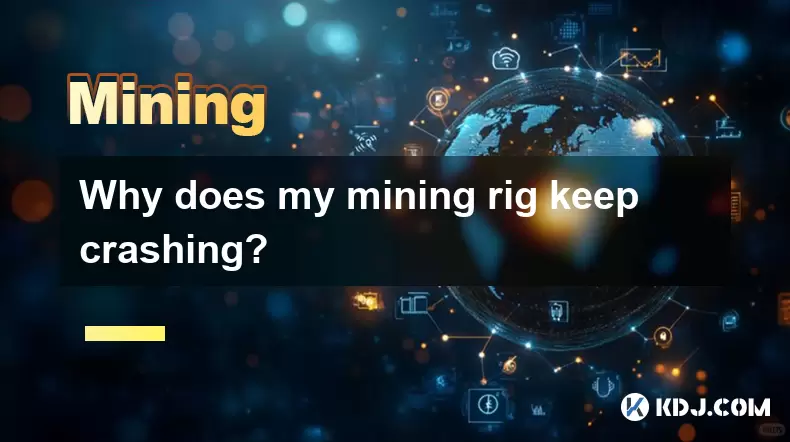-
 Bitcoin
Bitcoin $119,161.9671
1.52% -
 Ethereum
Ethereum $2,995.0722
2.34% -
 XRP
XRP $2.8555
5.32% -
 Tether USDt
Tether USDt $1.0002
0.00% -
 BNB
BNB $692.9308
1.48% -
 Solana
Solana $162.9611
1.87% -
 USDC
USDC $0.9999
0.00% -
 Dogecoin
Dogecoin $0.2014
2.84% -
 TRON
TRON $0.3032
0.90% -
 Cardano
Cardano $0.7464
6.51% -
 Hyperliquid
Hyperliquid $49.1533
5.71% -
 Stellar
Stellar $0.4773
24.77% -
 Sui
Sui $3.4979
3.93% -
 Chainlink
Chainlink $15.8552
6.01% -
 Hedera
Hedera $0.2401
23.85% -
 Bitcoin Cash
Bitcoin Cash $510.0474
0.97% -
 Avalanche
Avalanche $21.5550
4.82% -
 UNUS SED LEO
UNUS SED LEO $9.0389
-0.47% -
 Shiba Inu
Shiba Inu $0.0...01340
2.27% -
 Toncoin
Toncoin $2.9910
0.62% -
 Litecoin
Litecoin $96.4406
4.34% -
 Polkadot
Polkadot $4.0359
4.59% -
 Monero
Monero $338.4759
2.80% -
 Uniswap
Uniswap $8.6460
4.01% -
 Dai
Dai $0.9999
0.00% -
 Ethena USDe
Ethena USDe $1.0007
0.03% -
 Pepe
Pepe $0.0...01254
3.26% -
 Bitget Token
Bitget Token $4.3969
0.79% -
 Aave
Aave $312.2641
3.98% -
 Bittensor
Bittensor $397.0731
4.17%
Why does my mining rig keep crashing?
Overheating, insufficient power supply, driver issues, improper BIOS settings, and OS corruption are common causes of mining rig crashes.
Jul 13, 2025 at 10:50 pm

Hardware Overheating
One of the most common reasons for a mining rig to crash is hardware overheating. Mining operations are resource-intensive and generate significant heat, especially when running continuously. If your GPU or CPU temperatures exceed safe thresholds, thermal throttling or automatic shutdown can occur.
To diagnose this issue, you can use software like MSI Afterburner or HWInfo to monitor real-time temperatures. Ensure that all fans are functioning properly and that dust buildup isn't obstructing airflow. Improving ventilation in your mining setup area can significantly reduce heat accumulation.
- Check GPU and CPU temperatures regularly
- Clean fans and heatsinks at least once every two weeks
- Consider adding additional case or room cooling fans
- Use temperature monitoring scripts for automated alerts
Insufficient Power Supply
A frequently overlooked factor is an inadequate power supply unit (PSU). Mining rigs typically run multiple GPUs simultaneously, which demand high wattage. If your PSU cannot provide enough stable power, it may cause random reboots, blue screens, or complete system crashes.
To verify whether your PSU is sufficient, calculate the total power draw of your components using online calculators. A 1200W gold-rated PSU is often recommended for rigs with 6 GPUs. Also, ensure that all PCIe power connectors are securely connected and not loose.
- Verify total power consumption against PSU capacity
- Use a multimeter to test voltage stability on rails
- Replace low-quality or underpowered PSUs immediately
- Use modular PSUs for better cable management
Driver and Software Incompatibility
Mining software and graphics drivers play a crucial role in system stability. Using outdated or incompatible versions can lead to frequent crashes. For example, certain versions of NVIDIA drivers have known issues with mining performance, while some miners like NiceHash or PhoenixMiner may conflict with specific OS builds.
To address this, always keep your mining software and drivers up-to-date. You should also consider using a lightweight operating system like Ubuntu Mining Edition or HiveOS, which are optimized for mining environments and offer better stability than general-purpose OSes.
- Install the latest version of your chosen mining software
- Use mining-optimized OS distributions where possible
- Roll back drivers if recent updates caused instability
- Test different miner configurations for compatibility
Memory and BIOS Settings
GPU memory issues or incorrect BIOS settings can also lead to unexpected crashes. Mining puts immense pressure on VRAM, and overclocking without proper tuning can result in memory errors. Additionally, some motherboards require BIOS updates to support newer GPUs or higher memory capacities.
You can adjust memory timings and voltages through tools like BIOSMOD or ATI Tray Tools. Be cautious when tweaking these values—small changes can have large effects. It's also important to disable unnecessary features in the BIOS, such as onboard audio or unused SATA ports, to reduce potential conflicts.
- Adjust memory clocks and voltages cautiously
- Update motherboard BIOS for better hardware compatibility
- Disable unused onboard peripherals in BIOS
- Test memory stability using memtestCL or similar tools
Operating System and File Corruption
Crashes can also stem from operating system corruption or file system errors. Continuous mining operations can wear out SSDs or USB drives used for booting, leading to data corruption. Additionally, improper shutdowns due to power failures or crashes can damage critical system files.
To mitigate this, regularly check your drive health using tools like CrystalDiskInfo or smartctl. Use read-only filesystems or RAM disks where possible to minimize disk writes. Reinstalling the OS or switching to a more robust mining OS may be necessary if the problem persists.
- Monitor drive health with SMART tools
- Use read-only filesystems to protect boot media
- Back up configuration files frequently
- Reinstall OS if corruption becomes persistent
Frequently Asked Questions
Q: Can using too many GPUs on one motherboard cause crashes?
Yes, exceeding the motherboard’s PCIe lane and power delivery capabilities can cause instability. Always ensure your board supports multi-GPU configurations and has sufficient PCIe slots and power phases.
Q: How do I know if my mining rig is bottlenecked by the CPU?
If your mining software shows high GPU utilization but low hash rates, it might indicate CPU bottlenecking. Mining algorithms like KawPow or ProgPoW are more CPU-dependent, so ensure your processor is adequate for the task.
Q: Are there specific mining OS options that prevent crashes?
Yes, mining-specific OSes like HiveOS, SimpleMining OS, or Lux OS are designed for reliability and include built-in monitoring tools. These systems often experience fewer crashes compared to standard Windows installations.
Q: Should I use undervolting to prevent crashes?
Undervolting can reduce power consumption and heat output, which helps prevent thermal-related crashes. However, aggressive undervolting without testing can cause instability, so proceed carefully and monitor results closely.
Disclaimer:info@kdj.com
The information provided is not trading advice. kdj.com does not assume any responsibility for any investments made based on the information provided in this article. Cryptocurrencies are highly volatile and it is highly recommended that you invest with caution after thorough research!
If you believe that the content used on this website infringes your copyright, please contact us immediately (info@kdj.com) and we will delete it promptly.
- Ruvi AI: The Audited Token Primed for 100x Gem Status
- 2025-07-14 06:50:12
- Bitcoin's New Highs: Retail Interest and the Allure of Crypto Presales
- 2025-07-14 07:10:11
- Dogwifhat (WIF) Price Prediction: Bullish MACD Signals Potential Breakout
- 2025-07-14 07:10:11
- Ethereum Flips Bitcoin: Futures Volumes and the Altcoin Surge
- 2025-07-14 06:30:11
- Czech National Bank's Crypto Leap: Coinbase, Palantir, and the Future of Finance
- 2025-07-14 06:30:11
- BlockDAG's BEAT Vesting Pass: Dominating Crypto While HBAR Shows Strength
- 2025-07-14 04:30:12
Related knowledge

How are crypto mining profits taxed?
Jul 14,2025 at 12:28am
Understanding Cryptocurrency Mining and TaxationCryptocurrency mining involves validating transactions on a blockchain network and earning rewards in ...

How to keep a mining rig cool
Jul 12,2025 at 01:42pm
Understanding the Importance of Cooling in Mining RigsCryptocurrency mining is an intensive process that places heavy demand on hardware components, p...

How much does it cost to start crypto mining?
Jul 13,2025 at 12:22am
Understanding the Basic Costs of Crypto MiningStarting crypto mining involves several upfront and ongoing expenses. The primary costs include hardware...

What is the most profitable crypto to mine?
Jul 13,2025 at 07:00am
Understanding Mining Profitability in CryptocurrencyWhen evaluating the most profitable crypto to mine, it's essential to consider several factors tha...

What do I need to start mining crypto?
Jul 13,2025 at 12:28am
Understanding the Basics of Crypto MiningCrypto mining is the process by which transactions are verified and added to a blockchain, and new coins are ...

How does crypto mining work?
Jul 13,2025 at 11:01am
Understanding the Basics of Crypto MiningCrypto mining is the process through which new cryptocurrency coins are introduced into circulation and trans...

How are crypto mining profits taxed?
Jul 14,2025 at 12:28am
Understanding Cryptocurrency Mining and TaxationCryptocurrency mining involves validating transactions on a blockchain network and earning rewards in ...

How to keep a mining rig cool
Jul 12,2025 at 01:42pm
Understanding the Importance of Cooling in Mining RigsCryptocurrency mining is an intensive process that places heavy demand on hardware components, p...

How much does it cost to start crypto mining?
Jul 13,2025 at 12:22am
Understanding the Basic Costs of Crypto MiningStarting crypto mining involves several upfront and ongoing expenses. The primary costs include hardware...

What is the most profitable crypto to mine?
Jul 13,2025 at 07:00am
Understanding Mining Profitability in CryptocurrencyWhen evaluating the most profitable crypto to mine, it's essential to consider several factors tha...

What do I need to start mining crypto?
Jul 13,2025 at 12:28am
Understanding the Basics of Crypto MiningCrypto mining is the process by which transactions are verified and added to a blockchain, and new coins are ...

How does crypto mining work?
Jul 13,2025 at 11:01am
Understanding the Basics of Crypto MiningCrypto mining is the process through which new cryptocurrency coins are introduced into circulation and trans...
See all articles
























































































